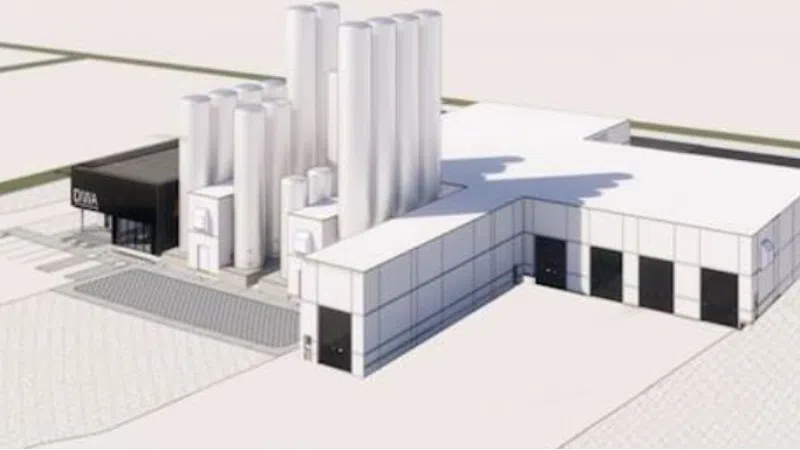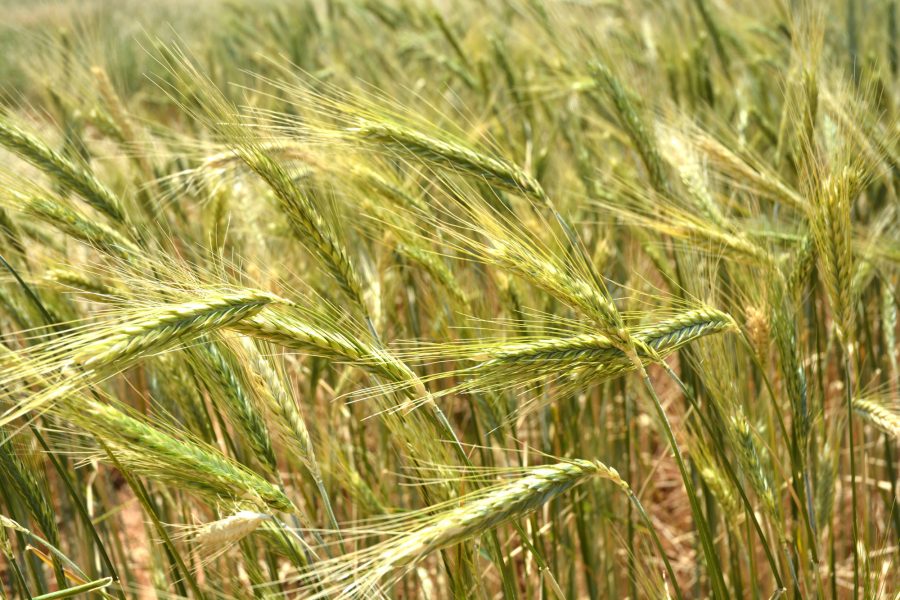Learn how Alberta’s $75M dewatering dairy plant will transform milk processing by 2025. Will this new technology reduce costs and improve sustainability for farmers?

Alberta, Canada, is set to open the first-of-its-kind, a revolutionary $75 million (€50.4 million) ‘dewatering’ dairy processing factory in the spring of 2025. This innovative facility is poised to revolutionize milk processing, significantly impacting the Canadian dairy sector. With its creative ultra-filtration techniques, the factory aims to enhance sustainability, reduce transportation costs, and streamline manufacturing, paving the way for a more efficient and eco-friendly dairy industry.
Henry Holtman, board chair of Dairy Innovation West, believes “this plant is a transforming step towards a more efficient, eco-friendly dairy industry in Canada.”
The new facility is a game-changer for central Albertine dairy producers, who have long grappled with limited local milk processing capabilities. Over 1,300 farmers stand to gain from this development, as it will enhance their operations and transform the financial landscape of the area’s dairy industry, thereby bolstering the local economy.
A Proactive Coalition: Uniting Dairy Marketing Boards for Revolutionary Milk Processing in Canada
Five leading dairy marketing boards—Alberta Milk, SaskMilk, Dairy Farmers of Manitoba, BC Milk Marketing Board, and BC Dairy Association—have joined forces in a bold initiative to revolutionize milk processing in Canada. This collaborative effort, under the banner of the Western Milk Pool, is a testament to the sector’s unity and power, and it is poised to address industry challenges and stimulate local businesses.
Farm Credit Canada’s backing provides essential money and agricultural economic knowledge. This alliance guarantees a strong financial basis and offers expected major advantages, like fewer transportation emissions and possible savings of $5 million.
Dairy Innovation West: Leading the Charge in Alberta’s Dairy Processing Revolution
Dairy Innovation West is Leading Alberta’s brand-new dewatering milk processing plant. Supported by five Western milk marketing boards, this company seeks regional environmental, economic, and technical advantages.
“This plant will create jobs, lower transportation costs for producers, and reduce our environmental footprint,” Henry Holtman, board chair of Dairy Innovation West, emphasizes as the main benefits of the endeavor. These advantages represent our commitment to Western Canada’s ecological and financially feasible dairy production.
The Revolutionary Dewatering Strategy: Transforming Canada’s Milk Processing Landscape
At this innovative plant, the cutting-edge dewatering system concentrates up to 300 million liters of milk yearly using sophisticated ultrafiltration. This technique removes certain soluble components and water from raw milk using semi-permeable membranes, preserving important milk solids such as proteins and lipids.
When milk passes ultrafiltration, its volume may drop up to 75%. After that, concentrated milk is a flexible basis for many dairy goods. It may be dried, for example, to produce skim milk powder, prized for its long shelf life and simplicity of transportation.
Furthermore, condensed milk helps cheese manufacture by means of better yields and simplified procedures. This invention benefits butter manufacturing, as a richer cream base improves both product quality and efficiency.
This innovative approach maximizes classic dairy products like skim milk powder, cheese, and butter. By lowering the amount of milk carried, it lowers the environmental impact and saves transportation expenses for farmers and processors. It also increases sustainability and cost-efficiency.
Revolutionizing Transportation: ultra-filtration’s Role in Dairy Efficiency
At the new plant, ultra-filtration marks a significant development in transportation efficiency. Concentrating up to 300 million liters of milk yearly helps drastically lower the liquid volume requiring transportation. Estimates indicate that 50–75% of the necessary truck trips might be avoided, saving manufacturers $5 million yearly. This efficiency is vital for central Alberta dairy producers, who already pay expensive shipping charges because of inadequate local processing. With the new facility, local farmers could anticipate better profitability and a more environmentally friendly dairy business.
Long forcing producers to transfer their raw milk to far-off provinces like British Columbia, the lack of milk processing facilities in central Alberta has long caused expenses and delays. Comprising up to 300 million liters annually, this new dewatering facility seeks to solve these problems. Means of ultra-filtration technology will lower environmental effects and shipping costs, enabling a significant step toward economic sustainability for Albert’s dairy sector.
Empowering Dairy Farmers: The Rise of On-Farm Milk Processing in Ontario and Beyond
Driven by the need for more control over product quality, marketing tactics, and financial returns, the trend of on-farm milk processing is expanding in Ontario and Canada. One such prominent example is Summit Station Farm in Ontario. Establishing their processing plant, they create a variety of dairy products—including milk, yogurt, and handcrafted cheeses—sold straight to customers and neighborhood businesses. This approach lets the farm leverage customer tastes for local, farm-to-table products and lessens reliance on conventional dairy cooperatives.
The more control Summit Station has over its goods, the better its standards of quality and consistency are guaranteed. Hence, one main advantage for them is That They Respond to customer needs more successfully than more centralized processing facilities. On-farm processing also provides the freedom to develop and swiftly launch new goods in response to market trends.
Summit Station may also customize its marketing plans to appeal to nearby customers, strengthening brand recognition and creating a devoted clientele. This direct-to-consumer approach creates stronger customer ties, as consumers value the openness and authenticity of buying straight from the manufacturer.
On-farm processing may significantly enhance a farm’s bottom line by obtaining better margins on processed goods than raw milk sales. This strategy guarantees a more consistent and durable income source and helps reduce the hazards connected with changing milk prices.
The trend toward on-farm milk processing enables Ontario and Canada’s dairy producers to take back control over their output and marketing, strengthening and adjusting the dairy sector.
Innovative Diversification: Enhancing Financial Stability Through Agritourism, Renewable Energy, and Value-Added Products
Dairy producers dealing with low milk prices and expensive feeds must diversify to survive. Many look beyond on-farm processing for agritourism, renewable energy initiatives, and value-added goods such as yogurt and handcrafted cheeses. Their public farm openings provide fresh income sources and encourage community involvement in dairy farming.
Solar panels and methane digesters can also help lower energy bills and generate revenue by selling excess energy back to the grid. Government subsidies and incentives for sustainability help offset starting expenses, benefiting the environment and earnings.
From the University of Minnesota, Dr. Marin Bozic emphasizes the need for creativity in finding new sources of income for dairy farms. “Innovation will enable more traditional dairy farms to incorporate diverse revenue sources,” he says, strengthening resilience and profitability. Maintaining competitiveness demands embracing new technology and business concepts. These approaches signify a turning point for the dairy sector as they guarantee economic viability and help sustainable development and environmental stewardship.
The Bottom Line
With the $75 million dewatering milk processing plant Alberta is building, she is poised to transform her dairy sector. Supported by five western milk marketing boards and driven by Dairy Innovation West, this facility will increase operational efficiency, boost farmer profitability, and promote environmental stewardship. Using sophisticated ultra-filtration technologies will considerably lower transportation expenses and ecological effects while generating employment and strengthening the area’s economy.
Reflecting a trend wherein farmers progressively manage their production and marketing channels, on-farm processing devices enhance these creative approaches. This change provides financial resilience and sustainability in line with professional opinions that say the future of conventional dairy production depends on diversification and innovation.
Alberta and beyond will be greatly impacted as the facility approaches its spring 2025 launch. The help and investment of stakeholders will be crucial in boosting the community and guaranteeing the survival of dairy farming in Canada. Working together, we can change the scene of dairy farming for future generations.
Key Takeaways:
- Alberta, Canada, will host the first ‘dewatering’ milk processing facility in the country by spring 2025, with a $75 million investment.
- The plant is co-owned by five western milk marketing boards and supported financially by Farm Credit Canada.
- This facility will process milk from over 1,300 farmers, offering job creation and environmental benefits.
- Dewatering will concentrate up to 300 million liters of milk annually, reducing transportation costs and environmental footprint.
- The plant addresses a critical gap in milk processing capacity in central Alberta, previously necessitating transport to distant provinces.
- On-farm processing is gaining traction as a strategic response to industry challenges, with examples from Ontario, Canada, and the US.
- Diversification, including agritourism and renewable energy, is vital for enhancing the financial stability of dairy farms.
Summary:
Alberta, Canada is set to open a $75 million dewatering dairy processing factory in spring 2025, aiming to improve sustainability, reduce transportation costs, and streamline manufacturing. The project will benefit over 1,300 farmers and boost the local economy. Five leading dairy marketing boards, including Alberta Milk, SaskMilk, Dairy Farmers of Manitoba, BC Milk Marketing Board, and BC Dairy Association, have partnered to revolutionize milk processing in Canada. Farm Credit Canada’s backing offers fewer transportation emissions and potential savings of $5 million. Dairy Innovation West is leading the new dewatering milk processing plant, which uses ultrafiltration to concentrate up to 300 million liters of milk yearly. This process preserves important milk solids, reducing environmental impact and transportation expenses. On-farm milk processing in Ontario and Canada is driven by the need for more control over product quality, marketing tactics, and financial returns. Summit Station Farm in Ontario uses this approach to create various dairy products, such as milk, yogurt, and handcrafted cheeses, sold directly to customers and neighborhood businesses.













